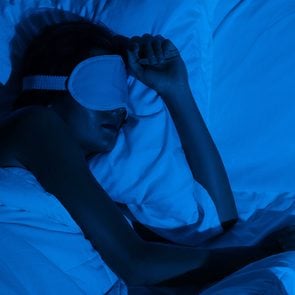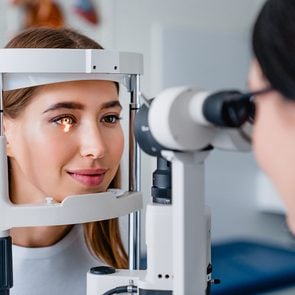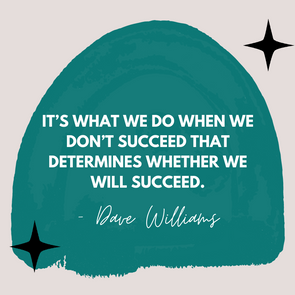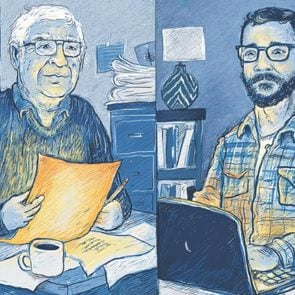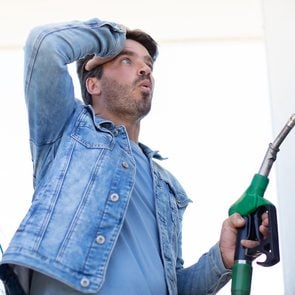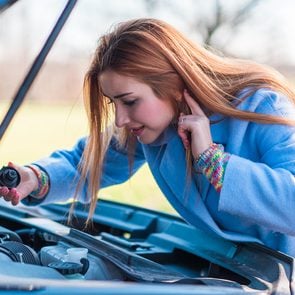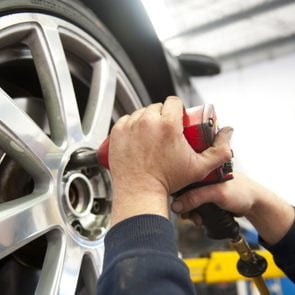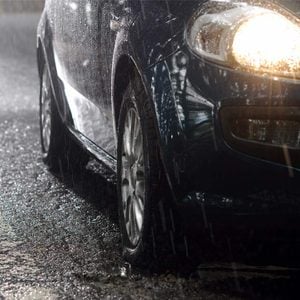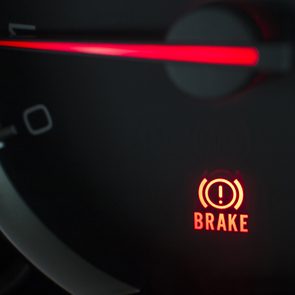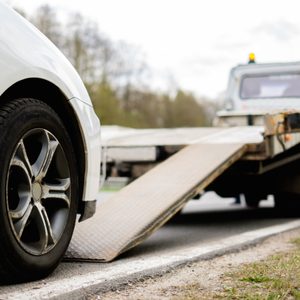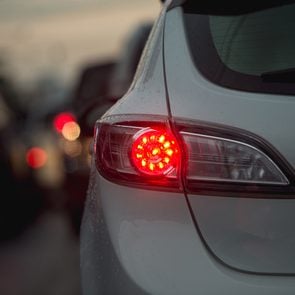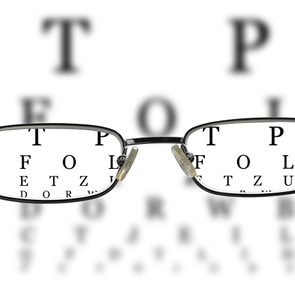
Why bother decluttering your nightstand?
Think about it: Your nightstand is the last thing you see before bed, and the first thing you see when you wake up. If it’s a jumbled mess, your mind and body could be suffering more than you think.
Researchers say living and sleeping in disorganized spaces can not only exhaust important cognitive abilities, but it can also diminish our working memory—the part of our brains responsible for planning and problem-solving.
A cluttered nightstand can also impact your sleep, especially if it’s home to light-emitting devices like smartphones, tablets and alarm clocks, says Tara Delorme, a PhD student at McGill University studying circadian rhythms. “Light actually reduces the amount of melatonin that we release at night,” says Delorme (melatonin being a hormone our brains produce to help us sleep). When we’re exposed to light at night—even if we’ve just briefly glimpsed an illuminated screen or clock face—Delorme says this can dampen our hormonal rhythms, triggering our bodies into wakefulness and making it harder for us to sleep.
While you don’t need to get rid of your alarm clock entirely, you might want to purchase one with dimming options, or choose to wear a sleep mask, says Delorme. You should also consider storing your electronics elsewhere. As for the rest of your nightstand stuff, here’s how to decide what stays and what goes—and how to organize it.

Start by taking stock
First, clear off the surface of your nightstand and empty any drawers, laying everything out on your bed. Having a visual of your nightstand’s full contents is the only way to accurately assess what you need and what you don’t, says Toronto-based home decor YouTuber Alexandra Gater.
Next, Gater suggests organizing items in four piles: A “keep” pile, a “store elsewhere” pile, another for donating and a final for trashing. “When I’m organizing, I find it helpful to picture my routine,” says Gater. If you apply essential oils each night, you’ll want to keep those handy. On the other hand, if you rarely make time to write in your journal, consider storing that item in a desk drawer or bookcase instead. Delorme suggests prioritizing things you associate with relaxation—a soothing candle, for instance—and relocating items you associate with work or everyday life, like a planner, for better sleep hygiene.
For the contents that make the “keep” pile, Gater recommends using drawer organizers to group similar items together. She suggests seeking out organizers or containers that are appropriately sized for the grouped items, like a small dish for rings or a rectangular crate (an old, sturdy shoebox could even work) for books. “If you get containers that are way too big, you’re just going to end up filling it with loads of other stuff,” says Gater.
What happens if, over time, things start getting crowded again? This just means you need to reassess, says Clare Kumar, a productivity coach in the Greater Toronto Area. “You might find there are items that you don’t have a purpose for, or they’re in the wrong room,” she says. In this case, maybe it makes more sense to relocate those creams and body care products you only use after you’ve showered to the bathroom instead.

Try a tray on top
If you frequently load junk onto your nightstand, you’re not alone. Just like your kitchen counter makes a convenient dumping ground for everything from car keys to spare change, your nightstand acts as a catchall for everything you might need in order to go to bed (and maybe some spare change, too). Both Kumar and Gater say trays help prevent clutter on the nightstand as they keep things corralled and provide a designated drop-spot for items.
You might also consider expanding your storage options beyond the nightstand by investing in under-bed storage on wheels or a small basket at your bedside. Not only do these strategies keep the clutter off the nightstand, but they also keep it out of plain sight, freeing your mind of any visual distractions and perhaps even resulting in a better night’s sleep.
Make it a habit
Both Gater and Kumar say keeping things organized really comes down to practice. Maybe you make it a goal to tidy your nightstand after you make the bed every morning, or before you brush your teeth at night. If you pair the task with something you already do every day, chances are you’ll be better positioned to turn a one-time thing into a full-fledged habit. And while it’ll take a bit of work to get things to a manageable state, Gater promises it’s worth it. “The first time you tackle a big organization, it’s going to be a long process. But once you put those systems into place, it becomes way easier to manage.”
For more tidying tips and tricks, check out these inspiring home organizing shows on Netflix.
Despite the fact that we commonly refer to it as a “twitching eye,” your eye isn’t actually moving at all—it’s that pesky eyelid. Eyelid twitching is pretty common and usually nothing to worry about, according to Dr. Ming Wang, PhD, Wang Vision 3D Cataract & LASIK Center. The condition of temporary or long-term eye twitching is called eyelid myokymia and it is the result of an involuntary misfiring of the neurons that stimulate your eyelid muscles.
What causes eye twitching?
There are several common reasons that your eyelids are twitching.
- Stress
- Excess caffeine (Here’s what your daily dose of caffeine does to your body.)
- Dehydration
- Fatigue
- Eye strain
- Alcohol
- Dry eye
- Nutrition problems
- Allergies
“Very rarely, eye twitching can be a sign of certain brain and nerve disorders,” says Dr. Hardik Soni, MD, Founder and Medical Director of Ethos Spa. “But then the twitch is accompanied by other signs and symptoms. Look for medical help if the twitching persists for a long time (one to three weeks), twitching occurs in other parts of the face, and the eyes are red, swollen, or have a discharge.”
How to stop your eye from twitching
The obvious answer is to address the potential causes of eye twitching to see if it helps. Get more sleep, cut back on caffeine, keep your eyes hydrated with drops, and do what you can to reduce stress. Some home remedies include drinking a five-ounce glass of tonic water or holding a cool—or warm—compress to your eyes. A more extreme approach involves Botox, says Dr. Wang, but he recommends against drastic measures since the condition generally resolves itself on its own.
Now that you know what it means when your eye is twitching, check out 20 symptoms you should never ignore.
When your mother enters her ninth decade, you make a point of being a little extra vigilant for any signs of decline—memory loss, bouts of repetition, a general acceleration of age-related deterioration.
Thankfully, my mother has been blessed with good health, and although she now needs to take someone’s arm while walking slowly up and down the hill to the family cottage in Gatineau, her mental faculties seem to have remained largely intact. But when she got inked after turning 80 in September of 2020, I had to wonder.
To celebrate Mom’s landmark birthday, we were planning a large party, but then, of course, everything had to be cancelled because of COVID-19. After all, her entire social circle was high risk, composed as it is of septuagenarian and octogenarian friends from her book (wine) club, her garden (wine) club and her church.
Instead, we arranged a small outdoor family lunch on the deck at the lake.
My mother looks just like many grandmothers. She is short, plump and white-haired. She’s rosy-cheeked and jolly, and when she laughs her eyes almost seem to disappear behind those chubby cheeks. She comes from an old, traditional Catholic family in Ottawa, where she currently lives. She was a career civil servant, first in England and then in Canada. In short, she didn’t do crazy stuff.
That all changed a few years ago. She began to surprise my older brother and me with bouts of what she described as “independence.” At the time, we merely saw them as examples of irresponsibility and possibly age-related questionable judgment.
In early 2015, the year she turned 75, she informed us she’d booked a seven-night trip to Turkey. Alone. Because she had never been. Of course, that was absurd. There was no way my brother and I could allow that. A vulnerable, little old lady wandering the streets of Istanbul on her own, not speaking a word of Turkish, with no knowledge of the laws and customs of the land—it was out of the question!
She paid no attention to us. Off she went. When she returned, she told us it had been a wonderful success. As it turns out, she had barely spent any time alone, after hiring a taxi driver to show her around Istanbul for a few days. He took her to all the sites—the souks, mosques and restaurants. He introduced her to a rug vendor, “a lovely fellow,” and she bought some rugs. The vendor had taken her address details and promised to ship them to Canada. They would be arriving in three or four weeks. My mother beamed as she told this story. The rug vendor and my mother apparently struck up quite a friendship and she had told him to please drop by if he were ever in Canada.
We couldn’t believe how naive she had been and duly sat her down to explain that she had been duped. The vendor had her money (and plenty of it, as she had declined to haggle). She neither had nor would she be receiving any rugs. And, of course, she had no possible recourse.
Well, we were wrong.
To our great shock, her rugs did arrive some weeks later, along with a lovely note from Mustafa. To our even greater surprise, the following year Mustafa himself arrived in Canada. He called our mother to inform her he was in Ottawa.
“I invited him over and he came by for a cup of tea. They drink a lot of tea in Turkey,” my mother told my horrified brother and me.
She hardly knew this man! But again, she paid us little attention and told us to stop being silly.
At 77, she did a similar thing while on a Caribbean cruise with her younger sister. Upon disembarking in Cuba, she wandered off on her own, flagged down a motorcycle rickshaw and had the driver “show her around the island” for several hours. Of course, she neglected to inform her sister of her plans (“she would have worried”), causing my aunt to spend the entire afternoon searching for our mother. My aunt didn’t find her until Mom returned just before the ship was due to depart. She had been sampling a local drink with “some very nice Cubans” at a bar “somewhere off in the forest, just a shack of a place, really.”
Still, her 80th birthday was when she really outdid herself. Sitting on the cottage deck for a physically distanced, outdoor birthday lunch with her siblings and children, Mom informed us that she had decided the time had come to get a tattoo. Her first. It would be her 80th birthday present to herself. She had been thinking about it for some time, apparently, and her mind was made up.
My brother and I eyed each other. Was she joking? Recent history would say no. What the heck does Mom know about tattoos? She goes to church, not to tattoo parlours. And really, an 80-year-old woman going to a tattoo parlour during a pandemic? It seemed so absurd we really didn’t believe it.
Six days later, she had a very tasteful butterfly on the outside of her left ankle.
My brother and I wondered: Is she not thinking straight? And if so, is it because she’s getting on a bit? But while my brother and I worried about her, Mom showed us that she was still sound of mind. In fact, maybe she’s thinking straighter than most of us.
Her streak of independence seems to be thoughtfully based on a realization that life is to be lived, and when there’s relatively little of it left, it needs to be lived, well, now. It reminded me of the line from The Shawshank Redemption: “Get busy living or get busy dying.”
Like most of us during the pandemic, she spent lots of time away from many of the people she loves. The tattoo was her way of flipping 2020 the bird. And we couldn’t be prouder of her.
I don’t think Mom knows what her next big “thing” is. She’s a little old lady who sits in her apartment in Ottawa, but she won’t sit still much longer. Sure, she’s prone to folly, though maybe that’s what we need right now. Some pointless, wonderful folly.
Next, check out the life lessons we all learned from our moms.
© 2021, Mark Angus Hamlin. From “A Tattoo for Turning 80?,” The Globe and Mail (January 5, 2021), theglobeandmail.com.
Until the day arrives when we’re all driving electric cars, most drivers need to purchase gasoline on a somewhat regular basis. So any little trick to improve gas mileage and get the most out of a tankful is welcome. But can you save on gas by sweating it out in the heat of summer and not using your car’s air conditioning system?
It’s possible. But the more you dig into this, the more you realize you won’t save enough to make much difference, let alone buy a new Porsche. We’ll walk you through the details.
Does Your Car’s AC Use Gas?
In short, yes, but not really enough to matter, according David Bennett, manager of repair systems for the American Automobile Association (AAA). “The AC system, when operating, does add a slight load to the engine, which could slightly increase gas usage,” he says. “This usage would not be recognized by most consumers.”
Can You Save Gas By Driving Without AC?
As much as we’d like to deliver a definite “yes!” or even a “no!” to this question, it’s more complicated than that. That’s because you need to consider your vehicle’s specific configuration and the type of AC compressor it uses.
“At a very high level, there may be a slight gas savings with the AC off and windows up,” Bennett says. “However, the savings would be minor and not realized by most consumers.”
What About Just Opening the Windows?
Turning your car into a sauna is never a smart idea. A miserable driver is a distracted, unsafe driver. But rolling down the windows and driving with them open reduces fuel efficiency even more than blasting the AC.
“Running the air conditioner when driving is actually more efficient and saves gas as compared to driving with the windows down,” Bennett says. “When the windows are up, the vehicle is more aerodynamic. When the windows are down, this creates excess drag on the vehicle, which increases resistance.”
What Are Some Ways to Improve Fuel Economy?
If you want to significantly improve your kilometres per litre, forget about the AC. Look elsewhere. AAA has plenty of tips online, but here are a few to note.
- Tire pressure: “Having tires that are improperly inflated will have more impact on gas mileage than whether the AC is used or not,” Bennett says. “Overinflated tires are less of an issue, but underinflated tires have a higher rolling resistance, which reduces fuel economy.”
- Drive conservatively. Avoid rapid acceleration and hard braking. AAA notes that can lower fuel economy by 15 to 30 percent at highway speeds and 10 to 40 percent in stop-and-go traffic.
- Avoid excessive idling. If you’ll be stopped for a minute or more and if it’s safe to do so, shut off your engine. An idling car consumes one to two litres of fuel per hour.
- Proper vehicle maintenance: To improve fuel economy, consumers should maintain their vehicle according to the manufacturer’s recommended service schedule.
Next, learn how to find the cheapest gas near you.

Check your car’s engine code and model year in the VIN
Auto parts stores always ask the year, make and model of your vehicle. That’s easy enough. But they also need to know which engine you have. Don’t know what’s under the hood or exactly what year it is? It’s all in the engine code (sometimes referred to as engine number) and vehicle identification number (VIN). You can find the VIN in the lower corner of your windshield on the driver’s side.
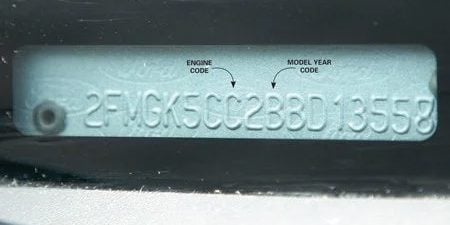
In the series of numbers and letters, the tenth from the left denotes the model year and the eighth is the engine code. Just tell the store clerk those two characters and you’re in business.
Now that you know how to find your engine code in the VIN, discover what these strange car noises could mean.
While some gas station restrooms are pleasantly cleaner and more modern than others, we’ve all come across the ones that just…aren’t. Without question, most people would assume that the restroom’s toilet seat is the dirtiest place in the station. Surprisingly, there are a lot of everyday things that are dirtier than a toilet seat—and this one of them.
As it turns out, the dirtiest thing at a gas station is the pump handle. This research was conducted by “Dr. Germ,” who’s more commonly known as University of Arizona microbiologist Charles Gerba. According to CleanTechnica, Gerba’s work showed that “71 percent of all the gas-pump handles that were sampled were ‘highly contaminated’ with [the] sorts of microbes most highly associated with illness and disease.” In case you needed another reason to keep hand sanitizer in your car at all times, here you go!

Why are gas pumps so dirty?
Gas pumps are things people can rarely avoid touching. As a result, a lot of people put their hands on them—and they may grab them without washing or sanitizing their hands first. According to Leann Poston, MD, this is especially true for travellers. “Travellers may have been in the car all day and not had access to soap and water, or may have used a restroom that did not supply soap and towels,” she explains.
It’s a simple formula: a common item people touch + people not washing their hands before they touch it = a thriving environment for germs. Plus, if people don’t properly sanitize their hands after touching the pump, they can spread germs to their most-used items. (Here’s why drying your hands is as important as washing them.)
How can people avoid getting sick?
Dr. Poston says there are a few effective ways to prevent germs from spreading at the gas pump. “Either use a paper towel over your hand when touching the gas pump so you don’t come in contact with it, or use hand sanitizer on your hands after pumping your gas,” she advises.
You should also pay attention to where, exactly, you’re putting your hands. “Avoid touching high-touch spots like door handles and push buttons as much as possible, and especially avoid using the pads of your fingers,” says Mark A. Schneegurt, PhD, a professor in the department of biological sciences at Wichita State University. “Pay special attention to the pads of your fingers and palms when washing.”
Some other tips include:
- Wiping down the pump with a disinfecting wipe before picking up the handle
- Wearing latex gloves when pumping gas
- Using a touch-free payment option at the pump, if possible
Next, find out why you should never use your phone when pumping gas.
The winding red Appin Road on Prince Edward Island is where my grandmother was born and raised in the old homestead her father built by hand from the timber on his land. My own mother visited the Island every summer as a young girl and she, in turn, introduced our family to the captivating scenery and warmth of the lslanders. PEI became like a second home. The relaxed, laid-back environment welcomes strangers and family alike. Saltwater breezes, sandy beaches and rugged shores lure us to this inviting island which abounds in folklore, ghost stories, lighthouses and enchanting tales of the endearing Anne of Green Gables.

The Allure of PEI Lighthouses
I decided to make the trip myself to take pictures of PEI lighthouses for my mom—she loves them. I waited day and night for the perfect lighting. I got up early for magnificent sunrises and captured spectacular landmarks by sunset. My digital map of the Island included all of the active and non-active PEI lighthouses. After taking a few days to look at each and every one for information and significance, I decided to feature two PEI lighthouses each day, one at sunrise and one at sunset. Because I drove to each location, it was a rush to set up sunrise shots, especially for lighthouses at the far ends of the island. I had lots of time to set up my ideal sunset shots. At the end of each day, I drove back to my cousin’s house for a good night’s sleep, but sunrises arrived early and called me back again.

Special Considerations For Shooters
I researched sunrise and sunset times to determine which lighting would present the best features of each lighthouse, while still capturing the sun. Other photos required researching the tides that can be hazardous if not diligently monitored. Things did not always go as planned and the weather did not always cooperate. Storm fronts move quickly along the Maritime coastline. I did not get the shots I expected to at the Teacup Rock formation at Thunder Cove Beach, which sadly no longer exists. Being alone in the freezing cold water at night, wearing chest waders, holding expensive camera equipment, all while trying to keep lights completely motionless underwater did not work at all. Nevertheless, it was a great learning experience.

Post-Production
Upon returning home to Ontario, I reviewed all my photos. I took 1,250 photos and kept only 120. Several were deleted, some were edited in Adobe Lightroom, and several quality shots were placed in my photo album on my laptop.

My favourites were selected for gift projects. After researching companies that transfer photos onto different surfaces, I chose to make calendars, 1,000-piece puzzles, and cozy fleece blankets with my PEI lighthouses on them as thank-you gifts and Christmas presents. The gifts showcase my love of photography, and of a very special place that inspires me to capture its beauty.
The gifts were received with awe and appreciation. They were keepsakes of a journey not measured in distance travelled, but by the learning and joy gained through the lens of my camera.
My camera and I look forward to future travels to various provinces across Canada to capture the beauty and intrigue of our majestic country.
Check out more breathtaking Canadian lighthouses.
The brake caliper plays a central role in a disc-brake system and has two functions. First, it acts either as a bracket to support the brake pads on either side of the rotor or to support the caliper bracket itself—there are other designs, but these are the two most common. Second, it uses pistons to convert pressure exerted on the brake fluid by the master cylinder into friction on the rotor.
In simple terms, a brake caliper’s purpose is to squeeze the brake pads against the rotor to stop the car. There are two main types of calipers, a single piston and a dual piston. Most front calipers are dual piston but many cars use single piston calipers on the rear, where less braking force is needed.
Stepping on the brake pedal forces the master cylinder piston forward, compressing the brake fluid. The brake fluid forces the caliper pistons toward the rotors, pinching the rotors in between the brake pads, which creates friction and slows the vehicle.
When brake calipers go bad
In general, brake pads and rotors wear out and need replacement far more often than calipers. A leading cause for damaged calipers, however, stems from driving a vehicle on worn-out pads or warped rotors. Both prevent the system from dissipating the heat of friction, as they’re designed to do, which can damage the calipers.
If the pads fail to insulate the caliper from excessive heat, the piston can be damaged or the heat can be passed through the piston to the brake fluid, which can cause it to degrade. The latter can result in brake failure.
A damaged piston, or one that is simply corroded, may get stuck in one position. If it sticks in the retracted position, that wheel will lose braking ability. If it sticks in the engaged position, the wheel will brake continuously until freed.
How to tell that a caliper has failed
With a retracted piston, the car may pull toward the side of the car with operating brakes when they are engaged. You may also notice that braking distance increases. Conversely, an engaged piston will cause the car to pull toward the engaged brake when driving. (Note: A stuck caliper can cause pulling, but there are many other possible causes as well.) Excess heat will be present, and the brake pad will quickly wear down. Any of these symptoms indicate immediate need for service. (Here’s what to do if your car shakes when braking.)
Another sign of caliper failure could include leaking brake fluid, as a damaged piston may no longer seal completely. If enough fluid escapes from the system, the warning light on the dashboard will call your attention to it. If you check your pad wear regularly, you may note uneven wear on the pads, comparing one side of the rotor to the other, or even left wheel to right wheel. If the pads show uneven wear, check the caliper function. And yet another sign of a seized caliper is excessive brake dust on one wheel compared to the other.
In the rarest form of failure, the caliper bracket could snap, causing a clunking sound when the brakes engage. If you hear this, stop immediately and do not operate the vehicle.
Ignoring any of these symptoms can magnify the damage. The cost and effort required to address the problem increases proportionally. Make an effort to examine the problem as soon as possible or have it evaluated by a qualified technician.
Important maintenance points
- As the brake pads wear, the caliper needs to stay centred on the rotor to allow for even pressure on both sides. There are different ways manufacturers accomplish this, and some designs are better than others at keeping the calipers sliding to compensate for pad wear. When brake service is done, always clean and grease the sliding mechanisms with a high-temp brake grease to preserve the full range of travel. If not properly lubricated, calipers can lock in one position, resulting in only one pad getting proper pressure on the rotor.
- Whenever possible, inspect the dust boots protecting the caliper piston and the two slide pins. These flexible covers prevent dirt and moisture from fouling the action of the associated parts. Any damage or tears found in the boots must be addressed quickly, before dirt and corrosion cause the parts to seize. It is possible to disassemble the caliper, clean the parts and replace the boots if you have some skill as a DIYer. Labour charges, however, make this impractical in most auto shop situations, so the most common resolution is full replacement of the caliper and bracket.
Next, check out nine strange car noises—and what they could mean.
In the mid-’90s, Connie Parke and her husband, Rob, settled in Anaconda, a tiny town tucked into the mountains of western Montana. When Parke, a mother of four, wasn’t bartending or working security at a hot-springs resort, she volunteered her time driving cash-strapped families the 12-hour round trip to the children’s hospital in Salt Lake City. Parke had experienced her own fair share of medical problems over the years: in the 1980s and 1990s, she beat uterine, ovarian and breast cancer, as well as lymphoma. By the early 2000s, she was, miraculously, in good health.
But one evening in 2003, while Parke, then in her early 40s, was driving back from Utah, she started seeing strange halos around tail lights and street lamps. “Wow, I must be tired,” she thought to herself. She’d worn glasses since she was six; she reasoned that she might need a new prescription.
Looking for answers
The next day, when Parke visited her optometrist, the tests he ran were alarming. She couldn’t see him wave his hand at the edge of her view, which meant she was losing her peripheral vision. He suggested it could be glaucoma, a group of eye diseases that damage the optic nerves. The condition is often caused by a buildup of pressure in the eye, which can lead to blindness within a few years if left untreated.
By the time Parke saw an ophthalmologist, three weeks later, her field of view was already murkier and narrower. The eye doctor agreed that it looked like glaucoma, but medicated eye drops, a typical glaucoma treatment, didn’t help, so Parke decided to consult more specialists around Montana and Utah. She wondered if her past chemotherapy was behind her vision problems, but the doctors dismissed it; it wouldn’t manifest years later. No one offered her a definitive answer or a treatment that would prevent her vision from getting worse.
As Parke consulted new doctors and tried to figure out what was wrong with her eyes, the halos morphed into clusters of foggy orbs. “It was like I was seeing fireworks that never went out,” she says. She stopped driving and relied on family to get around and run errands. She accidentally lit things on fire while cooking, walked into walls and tumbled up and down the stairs. Once, when she collided with a door frame, her son took her to the emergency room with a gash on her head. She was alarmed by her quickly deteriorating vision loss, but she held out hope that it wouldn’t be permanent.
About three months after her first symptom, Parke could no longer tell the bottles behind her bar apart. “Jim Beam and Jack Daniel’s look exactly the same,” she says. “I’d have a bill in my hand and wouldn’t know if it was a dollar or $100.” Unable to perform her job, Parke lost her shifts, so she applied for disability benefits.
To qualify, Parke needed to see a state doctor who was authorized to approve her for social security. She was surprised when the GP tested her eyes and delivered a new diagnosis. He believed that her retinas, the light-sensitive layer of tissue at the back of her eyes, had become detached—and that they couldn’t be fixed. “You are blind,” he said matter-of-factly, explaining that she’d have to learn to live without a sense of sight. Parke was crushed, but she believed the diagnosis. After so long without answers, this one seemed to make sense.
Adapting to a new reality
Unable to see, read or work, Parke fell into a depression. Her daughter Barbara helped her look for schools for the blind—where she could learn how to read braille and use a cane and other assistive devices—but there were none in Montana. They moved to Colorado, where they’d be closer to a school and Parke’s family. Rob found a house with a nearly identical layout as Parke’s childhood home, which helped her get around. She got to know her grandkids—nine in total—by the shapes of their faces. The company of relatives and her service dog, Talulah Mae, kept Parke’s spirits up through it all.
Over the next 15 years, Parke decided not to let blindness stop her from doing the things she loved. She fished, skated and kayaked, following the sound of Rob’s voice as she paddled along the surface of the water. She even developed a sense of humour about her new reality. Once, while Barbara was driving her somewhere, she stuck her cane out the passenger window. “What are you doing?” her daughter asked, confused. “I’m trying to see where we’re going,” she replied with a chuckle.
One more opinion
In October 2018, Rob got his eyes checked for cataracts at UCHealth, the University of Colorado’s hospital, and convinced Parke to see a retina specialist there, figuring it couldn’t hurt to get one more opinion, even after so many years. “You have nothing to lose,” he assured her. Although reluctant, Parke agreed.
After running some tests and scans, the doctor at UCHealth delivered some confounding news: “I don’t know how to tell you this, but there is nothing wrong with your eyes.”
Parke was floored as the doctor explained the truth behind her blindness. Her retinas weren’t detached. She just had a severe case of cataracts. A common 15-minute surgery could improve her vision. “I was momentarily angry,” she says. How did so many doctors miss this? she wondered. She blamed herself for not seeking out more opinions. “I didn’t have to be blind for 15 years.”
The doctor sent Parke to Dr. Jeff SooHoo, a UCHealth ophthalmologist who could surgically remove the cataracts, one eye at a time. “I definitely tried to undersell it,” SooHoo says. “For some people, you take out their cataracts and they still can’t see. But it usually won’t make things worse.”
The following month, on November 12, 2018, SooHoo operated on Parke’s right eye—making a corneal incision, removing the cataract with ultrasound technology and then replacing it with a plastic lens.
The next day, when a nurse removed the patch from Parke’s eye, she immediately burst into tears. She couldn’t believe it. She could see again. “I saw every individual strand of hair on the nurse’s eyebrow,” she says.
Incredibly, when SooHoo tested Parke’s eyesight after the operation, she could read the 20/20 vision line on a wall chart without glasses. Her vision was better than ever.
A sight for sore eyes
After her appointment, Parke laid eyes on some of her grandkids for the first time—she couldn’t tell a pair of twins apart, because she only knew the feel of their faces. It was jarring for her to see a grey-haired woman in the mirror, but she was more preoccupied with all the beauty she had been missing: squirrels jumping from tree to tree, thick fractal snowflakes, buds on branches. “I’d just sit there, waiting for the thing to bloom,” she says. She often found herself weeping with joy.
Parke had the cataract in her other eye removed a few weeks later and now has near-perfect vision. She repainted her house, got her driver’s licence and found a job as a care-unit clerk at UCHealth, the hospital that helped her.
She doesn’t dwell on the erroneous information that previous doctors provided her. “The minute I walked out of that hospital, I wasn’t even mad about being misdiagnosed,” she says. “I was just so happy to see.”
Next, find out the terrifying reason behind this 38-year-old woman’s vision loss.
If baby carrots are a staple snack in your home, you know exactly what we’re talking about here. You open a bag of carrots and notice a white substance coating your veggies. What the heck is it? Is it a sign that your carrots are going bad, or a sign they won’t last long? Is it even safe to eat?
Turns out, there’s a reason why that white stuff is there. Much like seeing the stringy white stuff in eggs and the white stuff on oranges, it’s completely normal to see this white substance on baby carrots. Let’s dive into what exactly it is and why it’s there in the first place.
What is that white stuff on baby carrots?
You may have heard that the white stuff on baby carrots is chlorine, but that’s just a myth. It’s actually a thin layer of film caused by dehydration, known as “carrot blush.”
Sign up for our Daily Digest newsletter for more health tips, home hacks and streaming guides, all week long.

How does carrot blush form in the first place?
According to Pol Bishop, a Gardening and Plants Expert at Fantastic Gardeners, the white film forms when baby carrots are exposed to the atmosphere and lose moisture. “Moisture loss in the thin outer layer of the baby carrot causes its surface to roughen up and light to be scattered throughout it. All of this results in whitish marks on the carrot,” Bishop explains. White blush can also appear due to the carrot’s damaged skin cells.
So, why does this white film only form on baby carrots and not regular carrots? “This happens because baby carrots do not have protective skin that prevents drying,” Susan Brandt, Co-Founder and President of Blooming Secrets, explains. “Full-sized carrots do have protective skin.”
Is carrot blush harmful?
Nope! This film is harmless, as it’s simply a sign that your baby carrots are dehydrated. You can remove it by washing your carrots. You can also soak your carrots in water to rehydrate them and bring their colour back. Something else in your fridge that’s harmless: speckled and/or bumpy eggs.
Is carrot blush a sign your baby carrots are going bad?
According to Brandt, carrot blush is not a sign your baby carrots are going bad; just that they’re dehydrated. So, don’t fret if you’re snacking on carrots and eat some of this white film—it’s not harmful and is simply a sign that they’re dry.
Next, find out what it means when your chocolate looks dusty.


